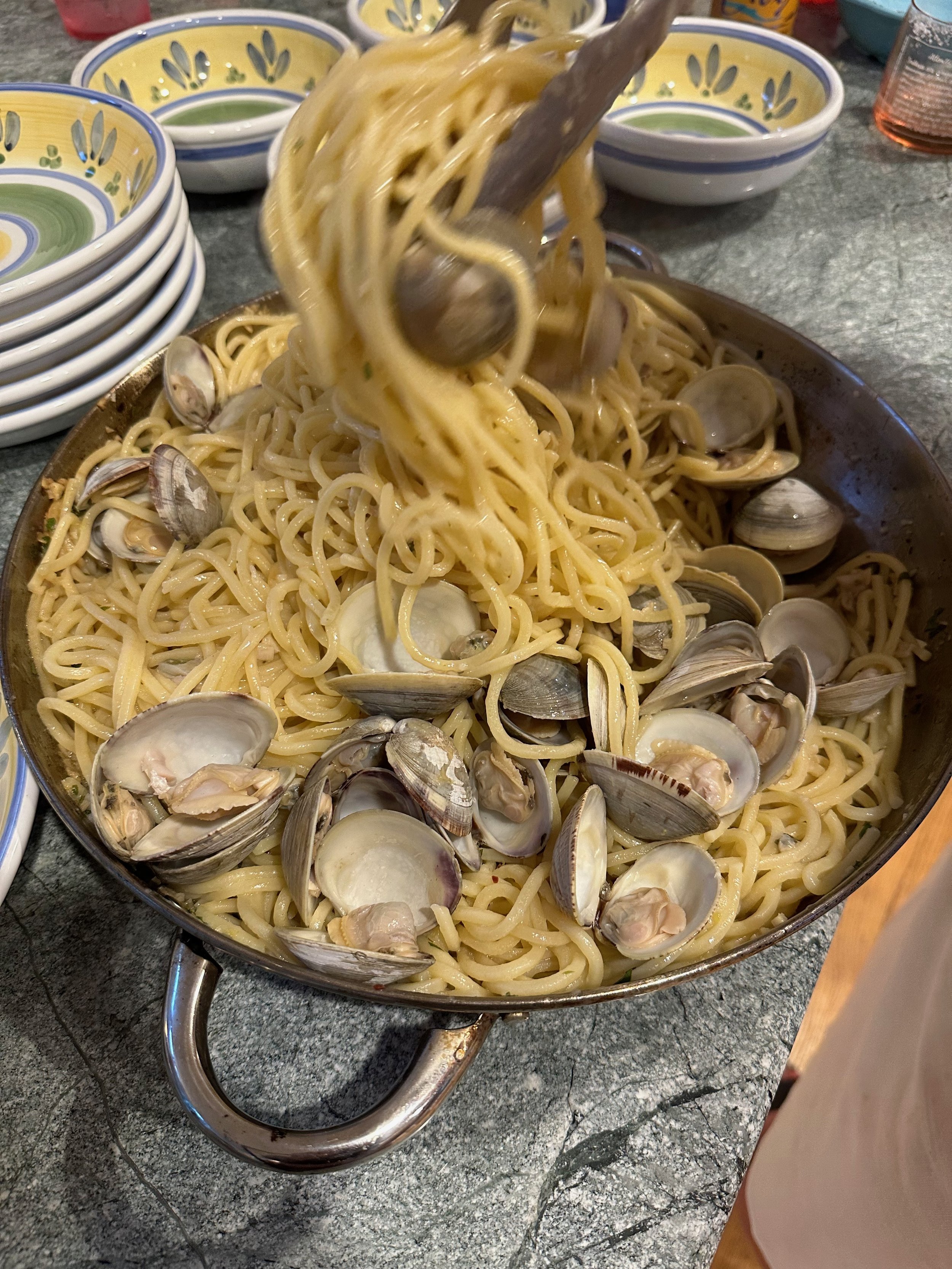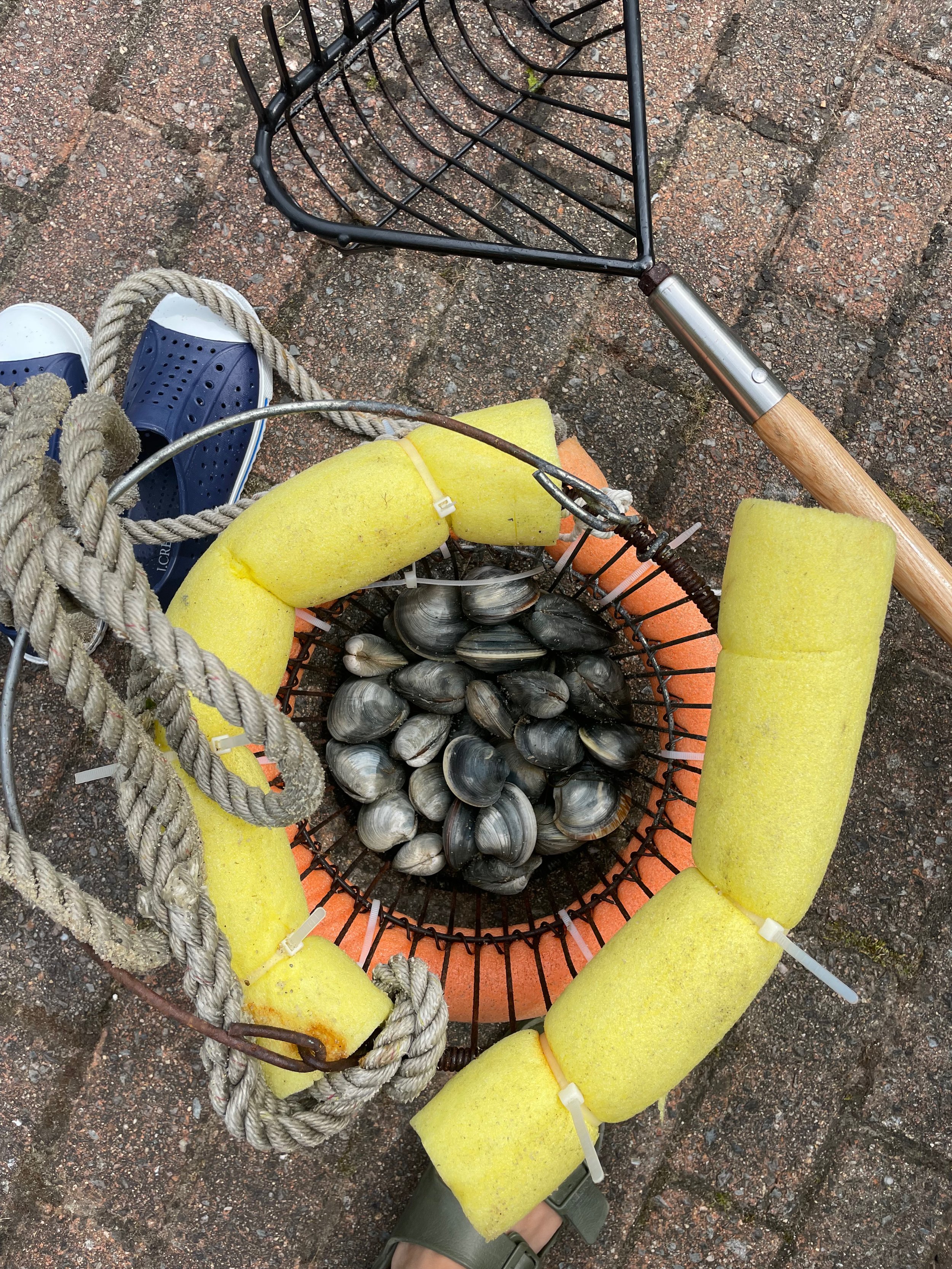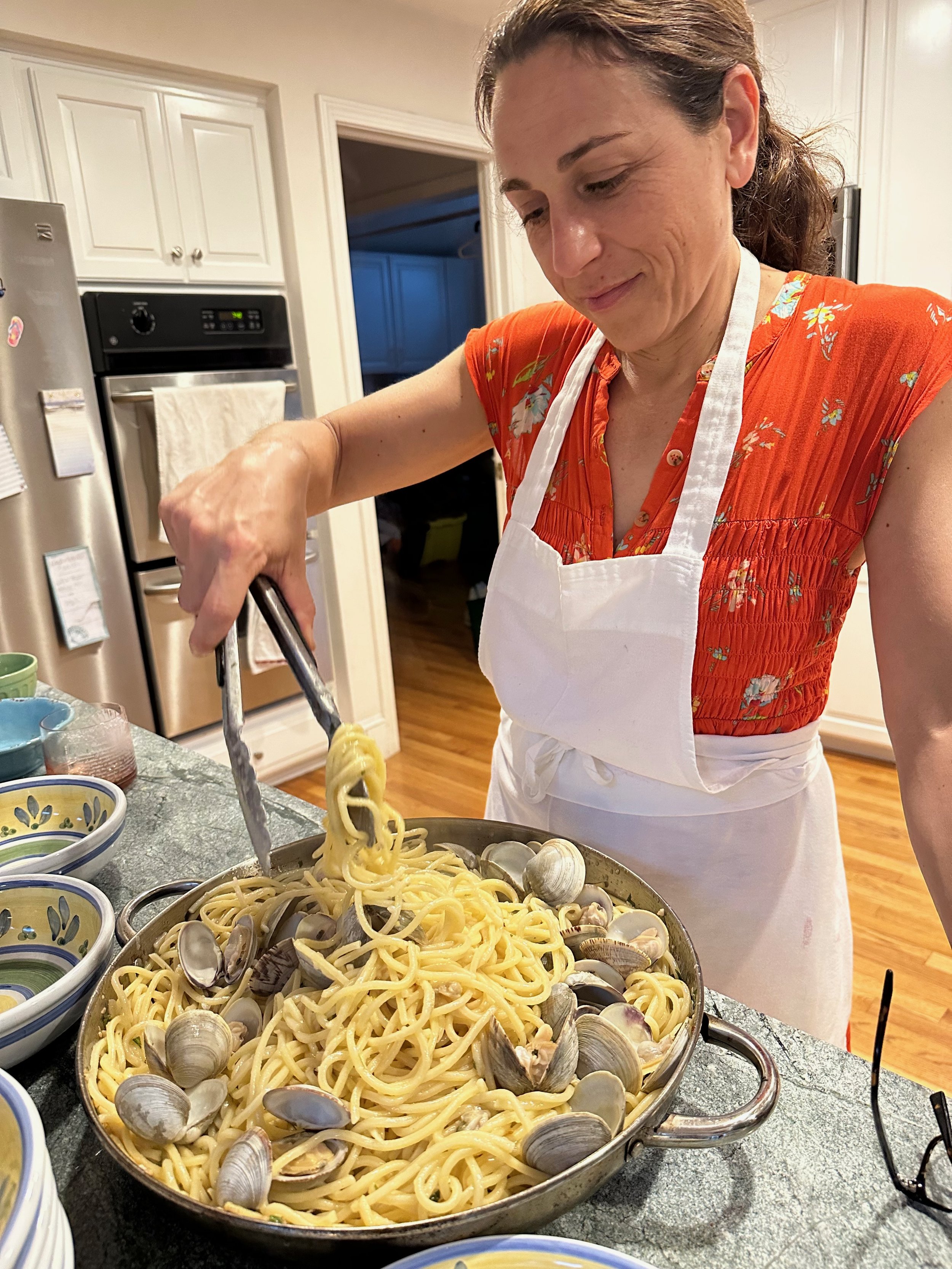Pasta with Littleneck Clams
Serves 4.
I’ve tried and tried to recreate the pasta alla vongole of the Cinque Terra. Nothing quite matches those briny, sweet veraci clams of the Mediterranean coast. The closest I’ve come to these mini clams are New Zealand cockles or the Pacific Northwest’s manila clams. If you’re in Auckland or Seattle, lucky you! If you’re on the East Coast, better to stick with littlenecks, which are plentiful and delicious. The technique for these bigger clams is slightly different — I remove most of the clams from their shells and chop them up so that each bite comes with a bit of clam.
The hardest part of cooking pasta with clams is cleaning the clams. Littlenecks hold a lot of sand. I’ve asked many folks (chefs, fishmongers, local fishermen, recreational clammers) what their tried and true cleaning method is, and it feels a bit like witchcraft. Everyone has a theory; no one seems to know what truly works. Some rinse in lots of water, others soak them in water mixed with cornmeal, black pepper, or salt. I’ve tried all the methods and have landed on the one below. If you know one that works for you, please DM me!
Also, if you’ve never been clamming, find someone with a permit, grad some water shoes and a rake, and GO! It’s the best way to simultaneously catch up with a friend while you forage for dinner. Store clams in the fridge, keeping them open to the air. When transporting raw clams, set them over ice, and keep their bags open or in a mesh bag so they can breathe.
1 gallon cold water
1/3 cup fine sea salt, plus a handful more (kosher) salt for the pasta cooking water
3½ pounds littleneck clams
1 cup dry white wine
¼ cup extra-virgin olive oil
4 tablespoons unsalted butter
3 cloves garlic, minced
½ teaspoon red pepper flakes
1 pound spaghetti
2 tablespoons chopped parsley, optional
Grated rind of 1 lemon
1 to 2 tablespoons lemon juice
1. In a very large bowl, mix 1 gallon of cold water and 1/3 cup fine sea salt and whisk to dissolve the salt. Add the clams and make sure they’re covered in this salt water. (If they’re not, add more salty water in that ratio.) Let rest for 1 to 2 hours, adding ice cubes to the water to keep it cold, or placing it in the fridge. The clams will open their shells and release their sand and gunk.
2. Pull (don’t pour) the clams from the salty water and place them in another large bowl. Discard the water and sand from the clam-soaking bowl. Run cold water over the clams, shaking and brushing them with a clean sponge or brush to remove grit. Pull them out of this second bowl and transfer them to the first (newly-cleaned) bowl. Repeat this, running the clams over cold water, swapping the clams back and forth from bowl to bowl until the water runs clear. (Do not let them soak in fresh water; they will die.)
3. Bring a large pot of water to a boil over high heat. Add enough salt so that it tastes salty like the ocean.
4. Set a large saucepan over medium-high heat, add the wine and bring it to a boil. Add the cleaned clams, cover with a lid, and cook, shaking the pan often. (The key with clams is to remove them from the heat as soon as they open so they don’t overcook and become rubbery.) When one opens, pull it out with tongs and place it in a large bowl. Continue to pull them out as they open. Turn the heat off once all of the clams have opened. (If one or two won’t open well after most of the others have, toss them out.)
5. Once cool enough to handle, remove half of the clams (the biggest ones) from their shells, reserving the clam juices in the bowl under them. Discard the shells. Finely chop the shell-less clams, removing any grit if you feel it on your knife or fingers. Set the chopped clams aside. Strain the remaining clam juice through a fine-meshed sieve and set aside. Strain the juice from the whole clams into the same bowl of strained clam juice; set aside.
6. Wipe the saucepan that you cooked the clams in clean and dry. Set it back over medium heat. Add the oil, butter, garlic, and red pepper flakes (¼ teaspoon if your diners don’t like spicy) and cook, stirring often, for 1 minute or until the mixture is soft but not brown. Add the strained clam juices and let reduce to a saucy consistency. Add the lemon rind, 1 tablespoon of lemon juice, and parsley, if you choose. Taste and add more lemon juice, salt and red pepper, as you like. The pasta sauce is ready to go.
7. Cook the pasta in the boiling, salted water until al dente. Save some of the pasta cooking water, then transfer the cooked pasta to the clam sauce. Set back over low heat and toss, using two big spoons, until the pasta is coated in sauce and tender but still has some bite. If the sauce is too thick, add pasta cooking water, a few spoonfuls at a time. Continue to cook the pasta to thicken the sauce or add cooking water to thin the sauce. Stir in the chopped clams until evenly combined, then the whole clams, and serve immediately.


